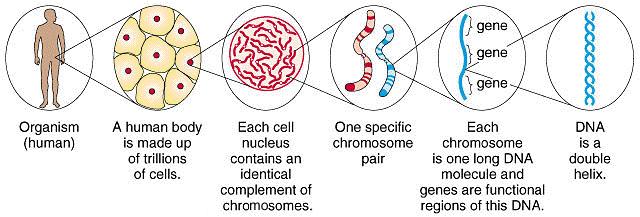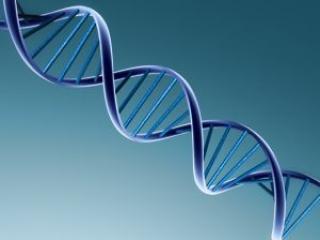©Translated by Katarzyna Goliszek
From the web page: eng.molgen.org in the Polish language: http://eng.molgen.org/viewforum.php?f=183, following the topic of http://eng.molgen.org/viewtopic.php?f=183&t=546 where we find people that we know from Histmag – Wilmar, Lappa and others, we present the new table of the number of R1a in Eurasia, sent to us by Robert 13. We also bring up an article about identification using genetic tests of the colour of eyes and hair of the Woman fromTyniec (the skeleton dates back to the 12 th century). Her burial was found in the saintly Abbey of Tyniec in the place where it should not have been found at all. I recommend the second article particularly to those who still doubt about the accuracy of genetic tests, their quality, methodology, and about the value of cientists’ work.
It is exactly as Robert 13 writes and as I presented it in the previous article about the Zero Wave and Simultaneity. Exact science which means genetics, has brutally infringed upon the fields of knowledge traditionally occupied by humanities whose representatives have not got used to the fact that their structures of thought and logical balancing act allowing for freedom have been precisely verified by science. The representatives of these humanities still resist the possibility of verification and they turn down the results against logic because these results deny their concepts. As a very wise person once said: ”New theories are approved not only for the reason that believers of old theories have accepted them and changed their views but because they have died.” It can be clearly discerned during present discussions. Many people among the present university staff who have professorial titles will die with an exclamation ” And yet the Earth is flat!”, and it will be only after their death that the irrefutable results will be accepted only because there will be nobody to shout that they are for nothing.
Or perhaps we approach this aspect too pessimistically?
♦
Robert 13 – The New Table of R1a Number in Eurasia
 Atim
Atim
![]()
R1a population, number in Europe and Asia –
Atlas of Genetic Genealogy. Greencore Environmental Information Services. Cherson, AD (2012).
http://atlas.xyvy.info.
https://sites.google.com/site/haplo4862 … -chart-dna
European Group (dominance of SNP-Z283), in percent
Poland 64,1
Ukraine 49,3
Slovakia 44,2
Latvia 41,5
Lithuania 36,7
Slovenia 36,5
Russia 36,0
Belarus 35,9
The Czech Republic 31,0
Estonia 30,9
Moldova 29,8
Norway 29,8
Croatia 25,7
Hungary 21,5
Iceland. 20,9
Romania 19,9
Germany 16,8
Greece 15,3
Austria 15,1
Bosnia-Herzegovina 15,1
Serbia 14,5
Holland 11,8
Luksembourg 11,4
Bulgaria 11,3
Macedonia 11,1
Switzerland 10,1
Kosovo 9,6
Albania 8,6
Turkey 8,3
Finlad 7,3
Denmark 7,2
Belgium 5,8
France 5,1
Asian Group (dominance of SNP-Z93), in percent
Pakistan 45.7
Kyrgyzstan 45.6
Afghanistan 29.8
India 26.7
Uzbekistan 25.7
Bangladesh 23.8
Tajikistan 22.6
Nepal 22.2
Kazakhstan 18.5
Oman 13.6
United Arab Emirates 13.6
Iran 12.1
Turkmenistan 10.5
Bahrain 10.5
Qatar 9.7
Syria 9.6
Georgia 9.2 +
Saudi Arabia 9.1
Iraq 8.1
Israel 8,0
Mongolia 7.6
Azerbaijan 7.4
Armenia 7.1
Kuwait 6,4
Bhutan 5,9
 Lappa
Lappa
This is an excellent job done by, among others, Tibor Fehéra – an administrator of the R1b-U152 projects and the Hungarian project – who, some time ago, announced research and forthcoming publication.
An amazing thing is that it is the first edition which spots the existence and division of the R1a group into the main branches labled with Z93 and Z280 markers.
(the markers have been known for over two years!).
It is worth mentioning that just a month ago, dr Rębało’s publication from the previous month was discussed here. The publication, apart from the main marker for all the R1a M198 and for the M458 marker had not spot any new findings since the end of 2009 (!).
(Contemporary paternal genetic landscape of Polish and German populations…)
CONGRATULATIONS!
Edit: I attach the table of research results for those of you who have not had access to the publication – a bit corrected by me (added values % and a general share of R1a samples in 1300 of the researched results of the project)
Altogether
The table of results
Table.gif (10.71 KiB) Viewed 164 times
 wilmar
wilmar
![]()
Bulgaria. Although the project was about something different – in search of Dracula – we have at last sorted Bulgarian Y-DNA (according to the text, 98 people, I counted 100) where the M458 was used.
Long ago, in histmag I estimated – as it turned out basing on erroneous assumptions – that there may be from 30-50% of R1a-M458 in Bulgaria in the rest of R1a. Y-Chromosome Analysis in Individuals Bearing the Basarab Name of the First Dynasty of Wallachian Kings
It looks as follows:
R1a in Bułgaria makes up 16% (16 people) , but M458 in R1a makes up 56,2% (9 people).
At least one seems to be L260+Romania (without Dracula’s ”relatives” n= 156) R1a=21,6% M458 in R1a is 22,2%.
(Underhill n=335 R1a=17% M458 in R1a to 31,8%)Hungary (n=192) R1a= 26,6% M458 in R1a is 35,3%.
(Underhill n=113 R1a=20,4% M458 in R1a is 21,6%). There is also Ukraine but the sample is of 43 people. (so there is not too much to pay attention to and especially when it comes to frequency). ”Traditionally” also two M17- (here SRY10831.2+) is no other than M417+, and rather the level of at least Z85.
Also, we have an operation on HG tree from the times of Underhilla (2009/2010).
 East Tyrol. An excellent and perfectly developed publication – it needs to be read: Pasture Names with Romance and Slavic Roots Facilitate Dissection of Y Chromosome Variation in an Exclusively German-Speaking Alpine Region East Tyrol. An excellent and perfectly developed publication – it needs to be read: Pasture Names with Romance and Slavic Roots Facilitate Dissection of Y Chromosome Variation in an Exclusively German-Speaking Alpine RegionIndeed, there should be a high resolution of hg Y-DNA (even M458 did not occur) n=270 R1a (exclusively and / or below M417)=14,1%. Looking on the haplotypes, I would state that the content of R1a-L260 in that R1a can reach even 29%. Considering other curios, potential I2-Din (I2-P.37.2) is 0,7 % (2 people). Not so far from us – in Slovenia, about 20 % (Rootsi 2004 n=55 I2-P37=20%, Battaglia (2009) n=75 I2-M423=20%). Let’s suppose that proportions are 1,5 to 1 (R1a vs I2-din) so there should be quite similar proportions here, not 19:1.What is the difference between the two areas? May the following information be the case?: “ Morlachs lived in the mountains of the region of Montenegro, Bosnia, Herzegovina, Vlaska and Dalmatia in the 11 th century. Later, in the 14 th century, a part of the Morlachs immigrated to the north as far as today’s regions of Croatia and Slovenia. In the 17 th – 18 th centuries the Morlachs were a significant ethnic element in the territories bordering between Habsburg Monarchy and the Ottoman Empire, especially in the territory of Bosnia. The territories were a military borderland and were called Morlachia.” |
|
| Top |
 ♦
♦
Genetics in the mysterious case of the remains of the Woman fromTyniec Abbey (dating back to the 12 th century)
In other words
Robert 13 versus opinion: Citation: [I get the impression that there are fewer facts here than on pages about UFO.]
Such are side effects when exact science brutally infringes upon humanities, i.e. when exact science is totally rejected as the science of ufology. I found an interesting article – ufology like, according to some people, but:
The mysterious woman buried in Tyniec Abbey in the 12 th century had most probably quite dark blond hair and brown eyes – Polish-Dutch research, in which a forensic method was used, proved it.
Analyses with the use of this method also proved Władysław Sikorski’s eyes and hair colour.
The research was carried through thanks to HirisPlex – a system used to analyse the human genetic material (DNA), developed by scientists of the Dutch University of Rotterdam, The Krakow Institute of Forensic Expertise and The Jagillonian University.
The test was made for the needs of forensics. It helps to determine characteristic features of a culprit’s phenotype, i.e. appearance, in this case – the colour of eyes and hair. Just a piece of body or liquid with a DNA trace suffices for analysis – a blob of blood, a bit of saliva or a bit of epidermis; they can also be bones.
The test uses the best 24 known genetic markers which indicate the colour of eyes and hair. Its creators selected them during earlier research. Even though a culprit is not known at all, the test lets experts determine the most likely colour of his eyes and hair. The avarage accuracy of the test is 94 per cent in the case of brown and blue colour of eyes; 69,5 per cent in the case of blond hair; 78,5 per cent – for brown; 80 per cent for ginger / red and 87,5 per cent for black. Moreover, 86 per cent can determine whether it is a European or someone from outside of Europe (excluding people from regions like the Near East).
Scientists were improving and checking the effectiveness of the test for a couple of years. In the latest article in ”investigative Genetics” (http://www.investigativegenetics.com/) they also prove that it can be applied not only in forensic genetics and criminology, but even in archeology. ”We mean research on people known from hisotry like, for example, general Władysław Sikorski” – dr Wojciech Branicki from The Krakow Institute of Forensic Expertise emphasised in an interview with the Polish Press Agency.
The results of the DNA analysis coming from his tooth proved information known from historic records and they agree with his apperance presented in pictures painted after his death: the general had blue eyes and fair hair. ”We chose Władysław Sikorski because his remains are fairly old bones from the Second World War. It is a hard material which we can often tackle in forensics” – explained dr Branicki. He added that the scientists used the DNA taken from the teeth in which genetic material is usually preserved best. DNA samples coming from anonymous prisoners from World War II were analysed similarly.
New projects have shown that the HIrisPlex system allows to analyse even quite badly damaged bone material dating from the times of the Middle Ages. ”One sample came from the 12 th century – it was about 800 years old!”, emphasised dr Branicki. We mean the remains of the so called woman from Tyniec, burried in one of the crypts of the male monastery. ”In the place where it shuold not be, indeed.” – points out the Krakow scientist.
”Colleagues from the Institute of Anthropology of the Jagiellonian University asked us to confirm the suppositions that this is a female skeleton. We applied genetic methods which proved it. At the same time we managed to reveal that the mentioned woman was brown-eyed and her hair was brownish or dark blond – the expertt said.
In dr Branicki’s opinion, the new system of analyses might turn out appealing to archeologists, but like all genetic methods, it is too expensive so as to become a common tool in archeology. Scientists have no doubts, however, that it will be more and more popular in forensics. What is more, owing to the development of science, besides the colour of eyes and hair scientists may also be able to recognise skin complexion and craniofacial build. Most likely also age and alopecia, which are predominant traits most frequently mentioned by witnesses describing a criminal.
The end of the quote
I encourage you to follow genetic clues on:
A Genetic Genealogy CommunityY-DNA, Mt-DNA, Autosomal DNA
Tagged with: nowa tabela zawartości R1a w Eurazji (the new table of R1a Number Eurasia)



